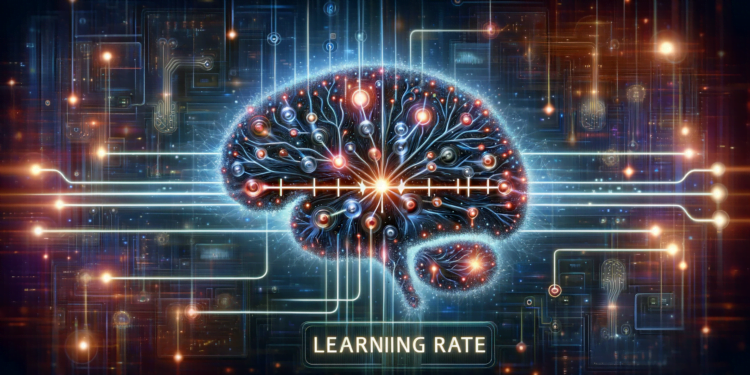What is the Learning Rate?
The learning rate, also known as learning rate in English, is a scalar factor used to regulate the adjustment of weights in algorithms that employ gradient descent, the most utilized mechanism for optimizing these types of models. Its main function is to control the extent to which the network’s weights are altered in response to the calculated error during backpropagation in each training iteration.
Importance of Choosing the Right Learning Rate
Choosing an appropriate learning rate is crucial. A value that is too large can cause the algorithm to oscillate or even diverge, missing the global minimum it seeks to find. On the other hand, a rate that is too small results in a very long convergence time, which can lead to excessively slow training and, in some cases, may cause the algorithm to get trapped in a local minimum.
Adaptive Learning and Learning Rate
Recent advances in optimization algorithms have led to adaptive learning rates, which adjust this value during training. Examples include AdaGrad, RMSProp, and Adam. These methodologies modulate the learning rate for each weight individually, based on the history of gradients for that weight, aiming to improve training efficiency and achieve better model performance.
Current Challenges in Learning Rate
One of the current challenges in AI is to determine the optimal learning rate automatically, dynamically adjusting during training without the need for developer intervention or prior assumptions. Research in this area is focused on autonomous methods that detect and adjust the learning rate to achieve optimal convergence.
Effects of the Learning Rate on Deep Learning
In the context of deep learning, the learning rate directly affects the model’s ability to capture complex features and levels of data abstraction. A careful balance can result in capturing a higher level of detail and precision in tasks of prediction, classification, or generating new examples from the learned data.
Case Studies
The application of an optimized learning rate can be observed in successful case studies such as speech recognition, natural language processing, or computer vision. In these applications, adjusting the learning rate has led to significant improvements in the accuracy and performance of the models.
Future Directions and Considerations
The quest for more sophisticated methods to automatically adjust the learning rate is an area of constant interest. Researchers are exploring the integration of artificial intelligence itself to determine this hyperparameter, making use of metacognition and metaheuristic learning so that models become increasingly autonomous and efficient.
Conclusion
The learning rate is an essential concept but also an active field of research. As algorithms become more advanced, understanding and effectively applying the learning rate becomes an even more critical skill for AI professionals. The future promises optimization methods where the learning rate is a lesser concern for developers, facilitating the construction of more robust and accurate artificial intelligence models.
This review provides a detailed analysis of the key component that is the learning rate, offering insights into its essential operation, its significance in different applications, and how recent advancements have the potential to enhance the autonomous adjustment capability of this rate for effective optimization in artificial intelligence algorithms.






















